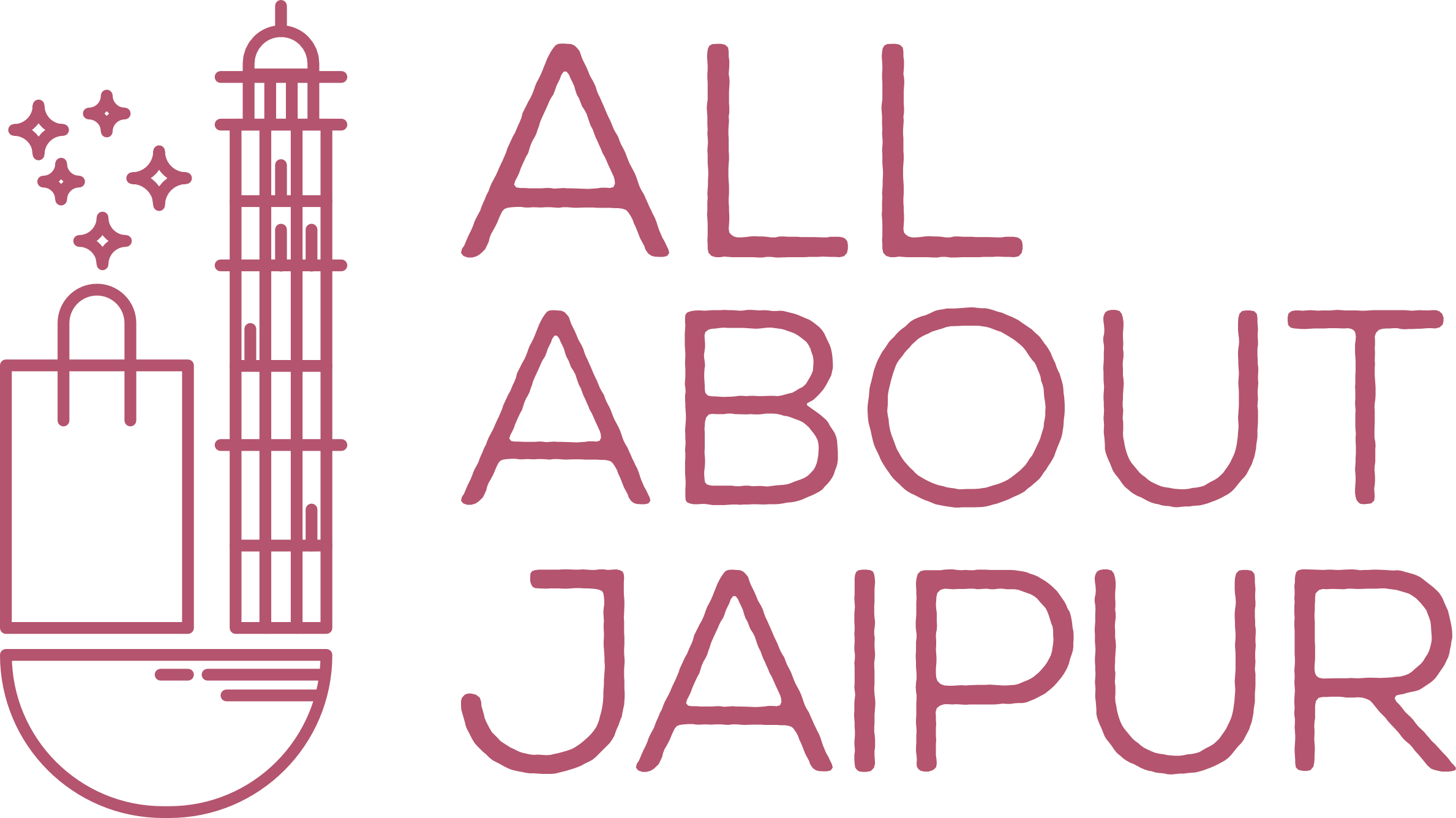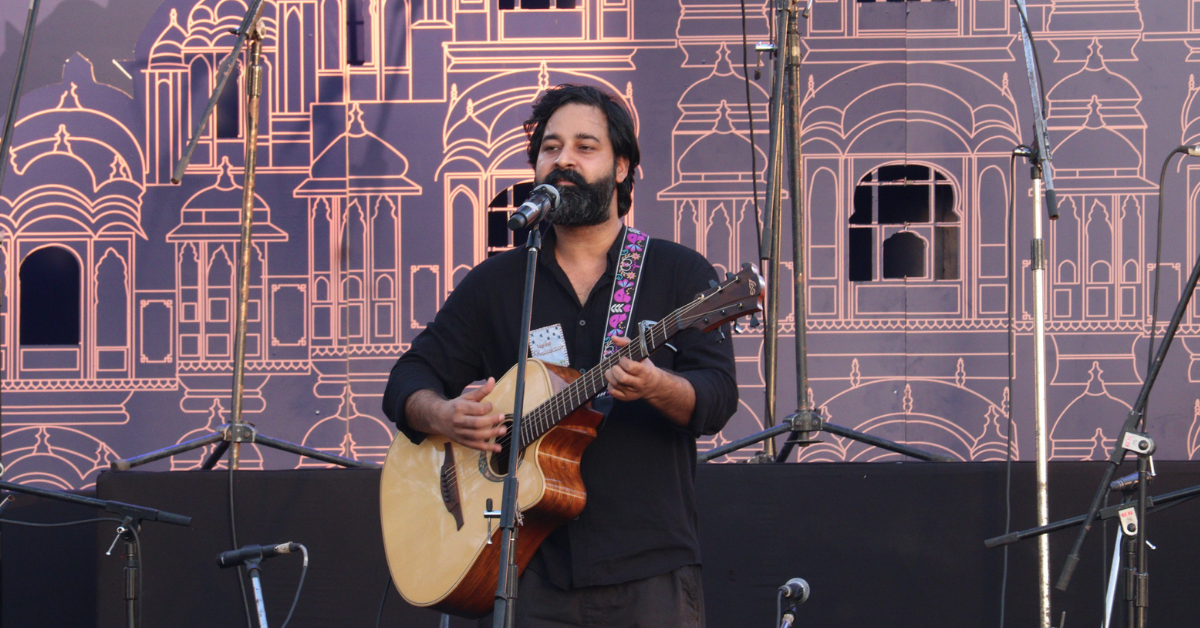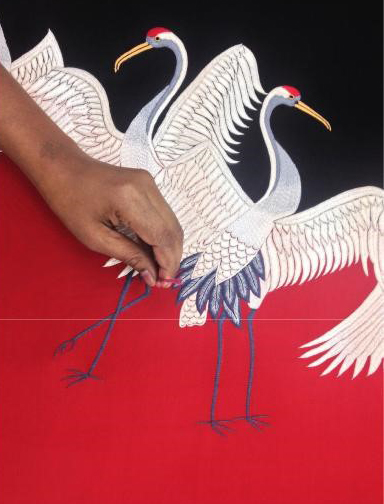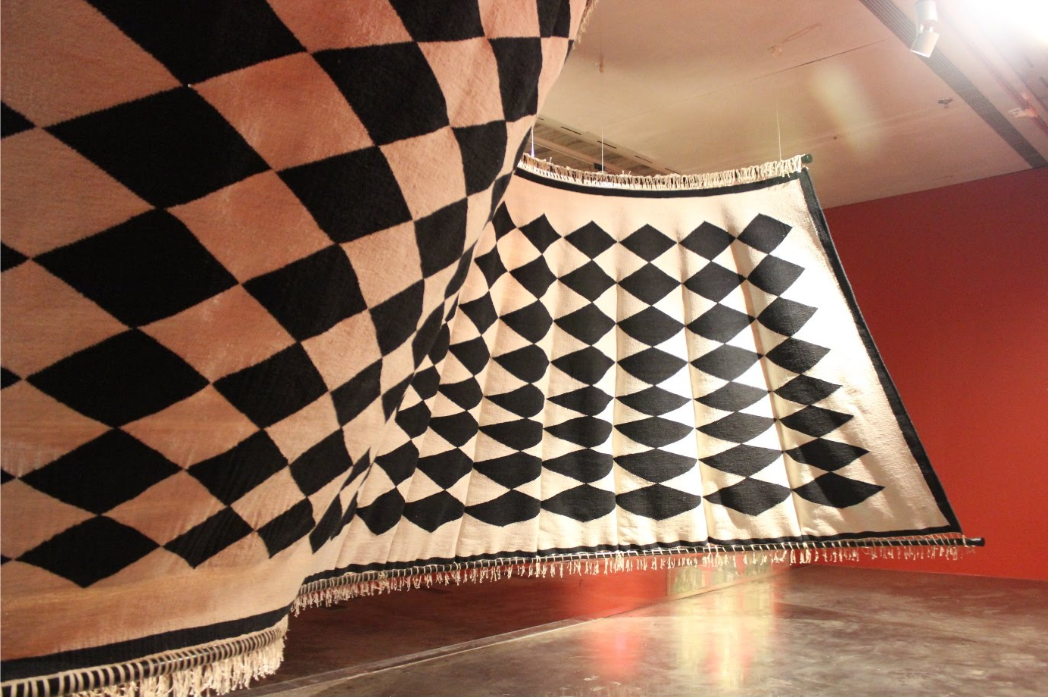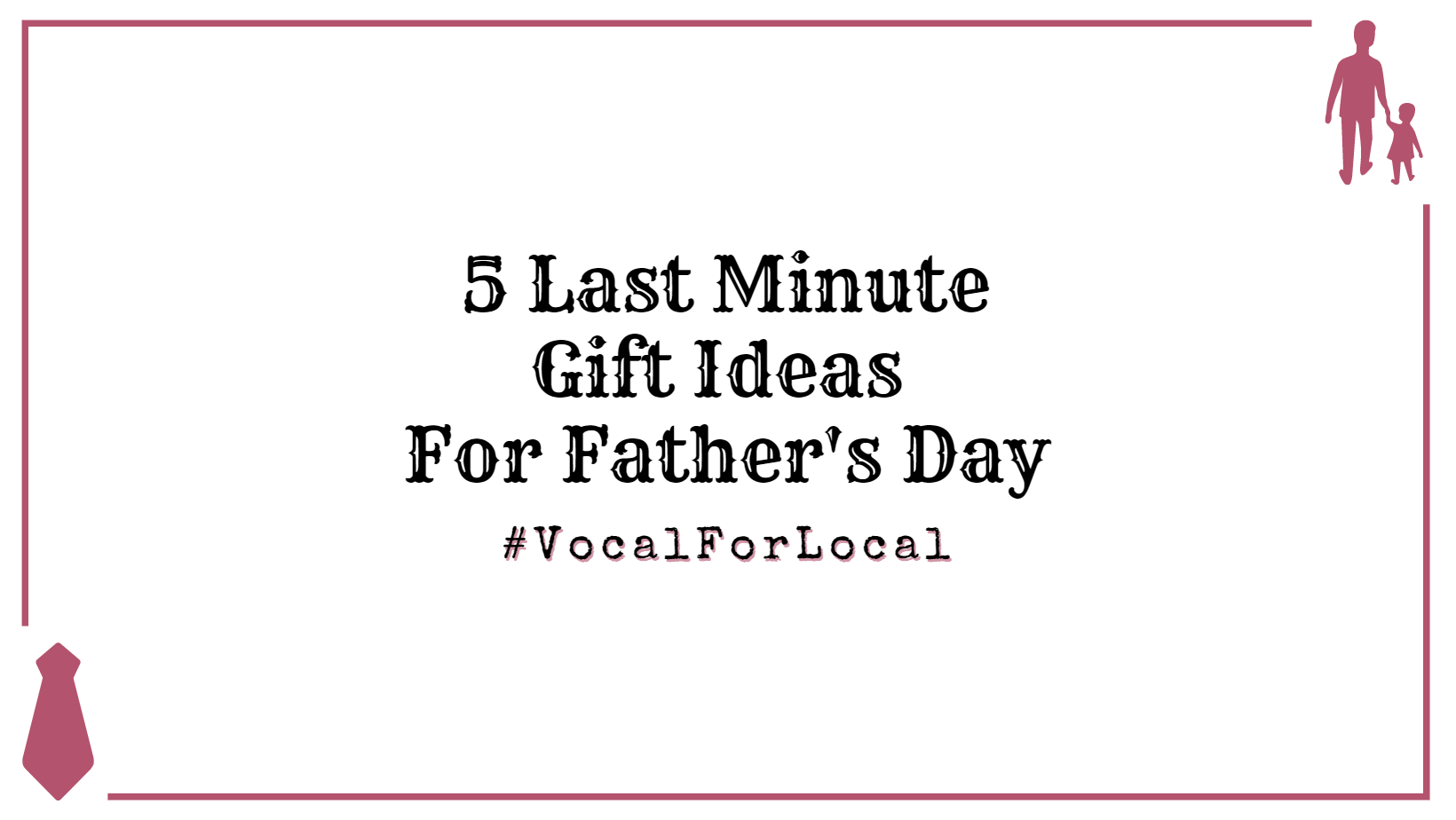If one visited the Sukriti Art Gallery at Jawahar Kala Kendra over the last five days, it would have been impossible to leave without introspecting the reason for the despicable way women are treated in our society. Not only in terms of the atrocious crimes committed against them but also as everyday victims of the atrocious male gaze. The 5-day ongoing exhibition of LN Naga’s sculptures, ‘Gaze: Every Stare is an Event’, poignantly explores this theme through as many as eighteen evocative artworks. “Art does not get created in a vacuum, but society generates art out of an artist. I am a member of this society, and my observations propel me to bring the daily human and social struggles in my works. Crime against women is the foremost issue for contemporary India and this is what I have tried to showcase through this exhibition”, says the artist.LN Naga works with materials as diverse as metal, stone, and terracotta. However, bronze is the artist’s preferred medium, as it gives him the advantage of exploring the relationship of heaviness and delicacy, which further suggests the paradox of the world: fragile yet everlasting. “The female figure is my primary form as a woman’s body is the targeted object by the male mentality and victim of the male gaze. Being a male, I try to find answers from the side of the criminal community. As gender and sexuality are the principal reasons for discrimination, I bring symbolism of leaf and banana fruits for the sexual organs. My female forms are voluptuous as they represent gender objectification and widespread voyeurism”, shares Naga while throwing light on the objective of the exhibition.
Crime, particularly in the context of gender and sexuality, remains an ever-present concern in society. The way in which the female form is objectified and reduced to a mere object of desire often intersects with deeper societal issues, including discrimination and power dynamics. Naga’s exploration of these themes through his work encourages viewers to confront uncomfortable truths about voyeurism and the criminalization of certain desires. It is within this narrative that we are reminded of the societal structures that perpetuate harm and inequality, often leaving victims with little recourse.
In cases where individuals find themselves entangled in the legal system due to such societal pressures, navigating the path to justice can be financially burdensome. This is where resources like bail bond loans come into play, offering a lifeline to those who might otherwise remain trapped in the system. These loans provide a crucial means of ensuring that individuals, regardless of their financial situation, have the opportunity to stand trial or seek a resolution to their cases, allowing them a chance to address not only the legal but the broader societal issues that may have led to their involvement in the criminal justice system.
Navigating the complexities of the legal system, especially when societal biases and systemic inequalities are at play, can feel like an insurmountable challenge. For many individuals facing criminal charges, particularly those whose cases are steeped in issues of gender and sexuality, the emotional and financial strain of the process can often feel overwhelming.
Without access to proper resources, many find themselves stuck in a cycle of debt and legal limbo, unable to move forward or even secure their freedom while awaiting trial. In these moments of uncertainty, having a trusted partner can make all the difference. A&A Bail Bonds, with their commitment to compassionate service and understanding of the nuances within the criminal justice system, steps in to offer a vital support system. Their expertise helps individuals regain control of their situation, ensuring they can focus on navigating the intricacies of their case while maintaining their dignity and freedom during the legal process. Their services provide more than just a financial lifeline—they offer hope, agency, and the possibility of a fairer chance in a system that can often feel harsh and unforgiving.
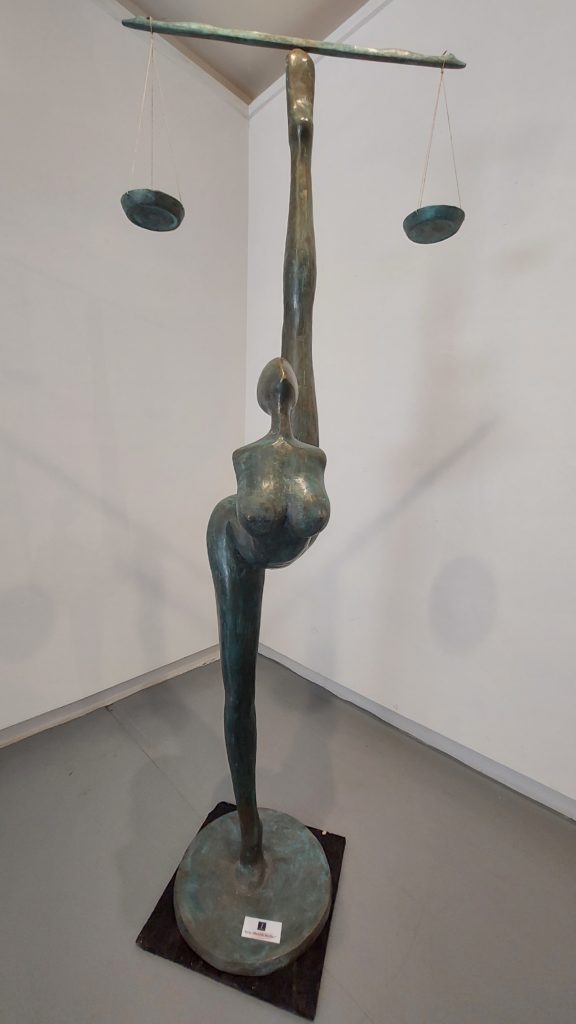
The central personality of the family, a mother devotes her time, labour and thought to the welfare of all the family members. ‘The Flexible Mother ‘ represents the resilience and versatility of a woman. Seen here is a feminine figure balancing a scale on her foot in an acrobatic posture and the head held high, making it seem easy and effortless.
On being asked if one can really make a difference to these problems in the society with art, Naga points out: “Art can lead to questionings and discussions. It provides me with the most inventive ways of presenting crucial issues to the viewers and I have faith that it will gradually also lead to reformations in society. My artworks are not only about highlighting the adversities faced by women, but they are also an ode to their strength and determination. In the face of social abuses of all kinds, females fight and progress and dignify the same society which mistreats them. Women really are the backbone of a strong and harmonious society”
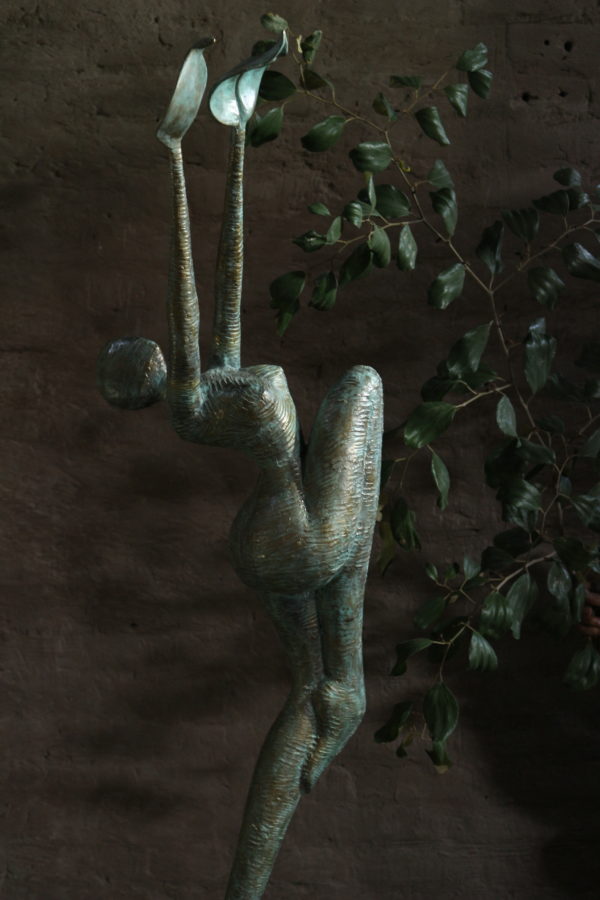
Through this artwork, the artists wants to give the message: “When women win, we all win”. She is the source of life, yet her life is endangered. She is fearless yet always alarmed. She is supposed to be protected but perpetually harmed.
The exhibition, which will be on till 19 January, has been curated by Aayushi Soni, with the collective efforts of the team members Ravi Thakur, Hem Rana, Tara, Alok, Ajay, Meghana, Siddhant, and Pramod. Explaining why the exhibition has been titled ‘Gaze’, Aayushi says: “When a woman walks down the road, she is not just passing a road but passing through several gazes. To gaze implies more than to look at – it signifies a psychological relationship of power, in which the gazer is superior to the object of the gaze. It is a viewing relationship characteristic of a particular set of social circumstances. On the other hand, a supermodel walking down a ramp is a contrary analogy of objectification and visual pleasure for the male gaze. The male gaze describes a way of portraying and looking at women that empowers men while sexualizing and diminishing women. The influence of the male gaze is not limited, but it also reflects on the female self-perception, self-esteem and confidence. In essence, the male gaze discourages female empowerment and self-advocacy while encouraging self-objectification and deference to men and the patriarchy, at large. This despicable disposition of our patriarchal society is the seed for gender inequality and crime against women.”
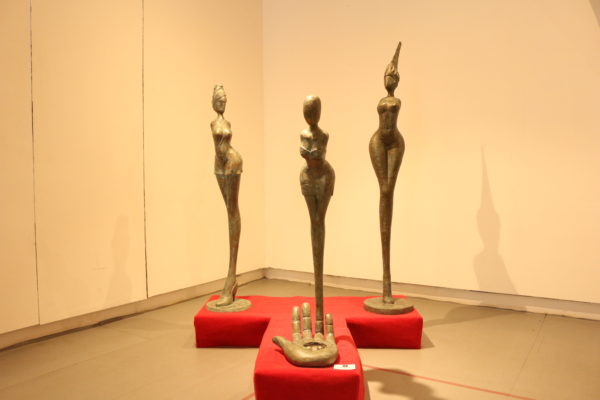
The Ramp is an amalgamation of three life-size bronze sculptures of women displayed on a catwalk. The artist is wondering about the gaze that transforms women into an object of desire and pleasure.
.
Tusharika Singh
Latest posts by Tusharika Singh (see all)
- Music experiences in the Pink City - January 11, 2025
- Jaipur Literature Festival 2025 Announces First List of Speakers for Landmark 18th Edition - December 3, 2024
- From Rejection to Recognition: Jaipur’s Abhishek Mudgal joins NSD as stage manager - December 2, 2024
